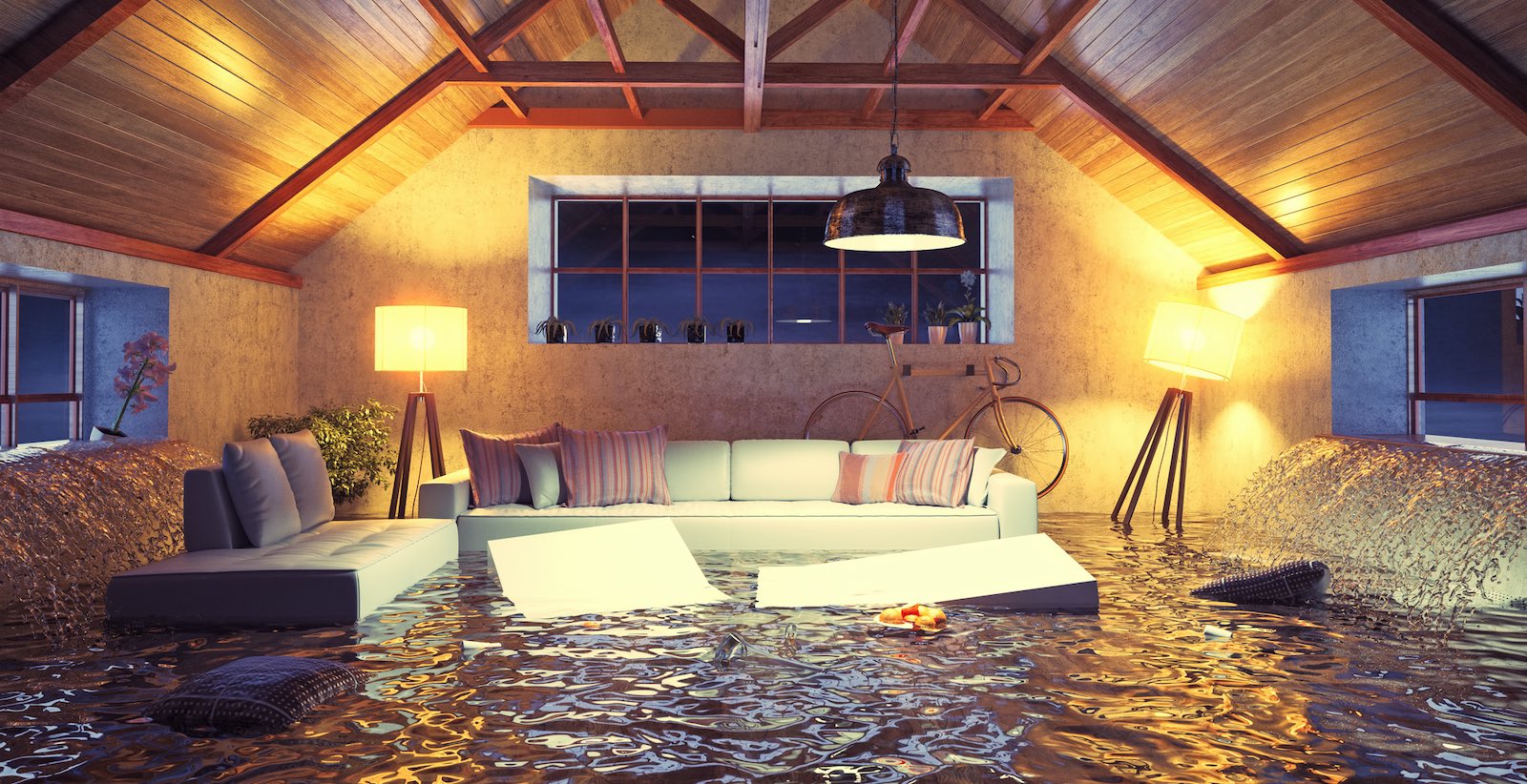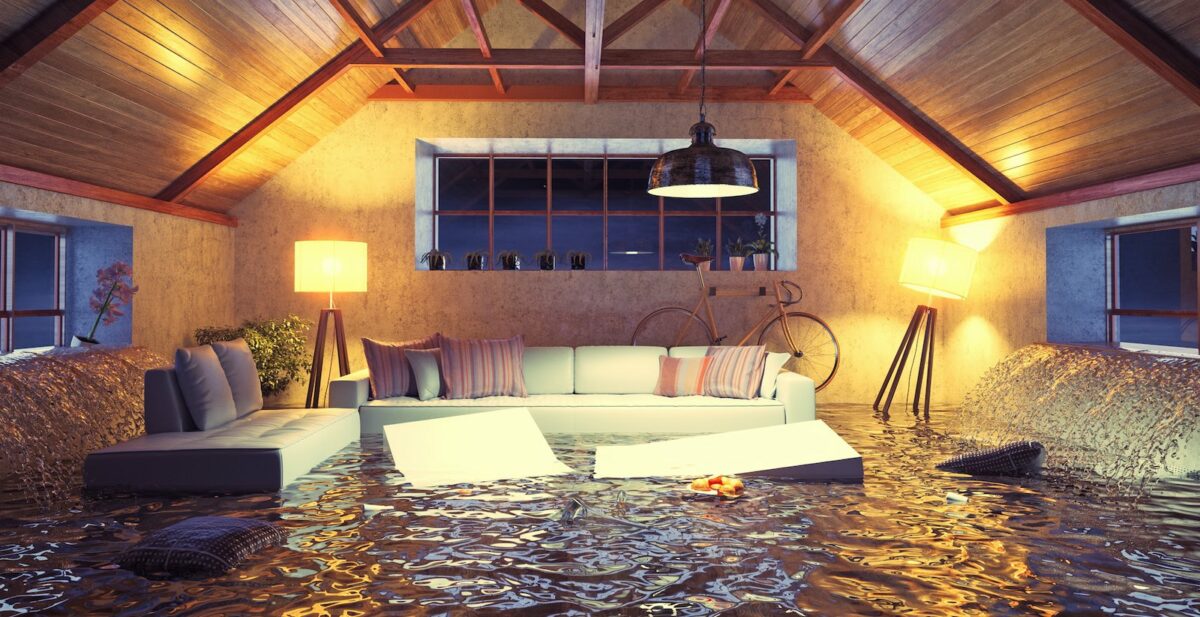
Most regions in the state of California are vulnerable to floods. According to the Public Policy Institute of California, every county has declared a flood disaster at some point. Further, the federal government’s National Climate Assessment states that “rising sea levels are expected to threaten coastal communities over the coming century by accelerating shoreline erosion and increasing the risk of flooding, especially during large storms.” As California experiences more intense storms due to global climate change, the need for flood control is becoming increasingly important.
What are Flood Walls?
In California, flooding generally occurs as a result of extreme rainfall, snowmelt, excessive runoff, recent wildfire areas, levee failure or a combination of these sources. These days, California residents are relying less on sandbags and moving more towards flood walls when faced with a potential flooding disaster. Flood walls are an easy way for residents to protect their homes from the water or debris. With the rise in frequency of natural disasters, it’s safe to assume that more residents will turn towards flood walls instead of sandbags.
Flood walls are generally engineered structures made of reinforced concrete. They can be built up to 20 feet in height and designed to be aesthetically pleasing architectural and landscape features. These structures are built at the base of the home around the foundation of the structure, with a channel for water to run through. Some walls have openings in them so emergency vehicles can run through them if need be.
What is a Levee?
An option similar to a permanent floodwall is a levee (also referred to as a flood embankment), which is a barrier constructed out of compacted earthen materials with interior cores of impermeable soil (i.e. clay). Construction typically begins with excavation to ensure subsurface soil conditions are taken into account in design. Levees generally need special permits to be constructed and take up much more space than floodwalls. Floodwalls are typically more expensive to construct than levees, but require less space and landscaping and are more resistant to erosion. Construction of all flood walls should be undertaken by licensed engineers.
What are Permanent Flood Walls?
Permanent flood walls are permanent barriers constructed on your site to prevent water from coming into contact with your building. Flood walls must be specially designed to resist the pressure caused by the floodwater acting on one side of the wall. While floodwalls are often constructed of reinforced concrete, they can be faced with more attractive building materials or integrated into the landscaping of the site to be more attractive and less conspicuous. One of the main advantages of permanent flood walls is that the building does not have to be disturbed at all.The main disadvantage of permanent flood walls is that you need sufficient extra land around your building on which to build the walls.Some localities restrict the construction of individual floodwalls. It is important to check your local zoning/building code to determine if it is possible to build floodwalls on your property.
How Do Flood Walls Work?
A flood wall is typically made of concrete, but can be made of other materials as well. Your city or state building department will have the specifications for them if they are required in your area. The walls are usually 6″ to 12″ thick and are round in shape on the outside. They sit deep into the ground with 4″-6″ of the wall above ground.
What are Basic Types of Flood Walls?
- Culvert – this is a small structure built to carry water from ditches and streams under/around buildings, parking lots, yards etc. They usually have a 2-3′ throat that terminates into a “Y.” The part going underneath the building can be built to fit inside existing structures.
- Prefabricated – these are ready-made units that are placed into the ground and then filled with dirt for leveling or backfill.
- Earthen levee – this is a low mound of earth used as protection against floods. Construction engineers create these by sculpting soil according to your building requirements.
- Gravity – this is a large concrete wall that prevents water from entering residential or commercial areas by sheer weight of the wall itself. It is typically used in dams and other commercial locations.
What are Flood Walls Made of?
Flood walls can be made out of various materials such as stone, brick, wood and plastic sheeting. The height and thickness of the wall is determined based on what it will be protecting from floods: high rise office towers require much more protection than homes for example. The width should also take into account how close the building is to other structures.
A common choice for building a flood wall is concrete. Concrete is made from cement, water, sand, and crushed rock or gravel; all of which are readily available in large quantities near nearly every major city. It also doesn’t corrode easily, even when it comes into contact with salt water from ocean floods or river floods, making it a very long lasting material. On the down side, concrete is expensive to produce. It must be mixed by hand and poured immediately after being mixed since it takes time for the cement to set. In addition, concrete doesn’t hold up well if it is repeatedly struck by large objects, so if it is made thick enough to withstand some of this abuse it may be impractical for use.
A second common choice is steel. Steel requires less raw material than concrete, but must still be mixed and poured on site; however it can be reused over and over again without losing its strength, making it a cost effective choice. On the other hand, steel rusts when it comes into contact with saltwater and can corrode easily unless it is galvanized or painted to prevent such contact. If these precautions are not taken, a flood wall made of steel will soon rust through and become useless. This makes steel more of a short-term solution until a longer-lasting material is found that can withstand the elements and repeated abuse.
Wood usually only lasts for a few floods before it rots through or is crushed by debris in the water; however it may be strong enough to last for a few years in some situations. Rocks are only useful if they are already present on or near the site where the flood wall is to be built, since it takes time to gather enough rocks together to build any kind of structure.
Things to Keep In Mind When Building Flood Walls
If you have a long stretch of property that needs protection, you can build multiple flood barriers to run alongside one another with an offset located in the center of your property. This helps divide up the force of the incoming water and helps keep things safe. Just be sure that they are about a foot apart from each other so they can truly work to their full potential.
When building your walls, it is best to do so in sections that are pre-built. These segments are much easier to handle when getting started and you will have less of a risk for accidents while working with them. They are also easier to transport depending on where you live. If the segments need to be moved a long distance, it can be very difficult to get them there. Keep in mind that you will have to have extra concrete on hand so you can finish the tops of your walls once they are in place. It is also a great idea to add some kind of drainage system on top so water can flow away from your home and not accumulate on top of the wall.
If you don’t have a lot of building experience, your local contractor can help you build these walls to last for years. Contractors will make sure they are functional as well as built correctly so that everything is done properly. Keep in mind that flood walls are only effective if you keep them up to date.
You need to make sure you check them regularly for cracks and damages. This is important because if the walls were too old your flood walls wouldn’t be able to stand up to water pressure like they are supposed to. If the flood waters reach your home, it will lead to flooding inside or near it depending on where the wall is located. Every few months or so you should take a look at the wall and make sure there isn’t any debris getting stuck in them like trees and branches. There is nothing worse than having a branch fall into your home during a storm because it damaged the flood barrier that was supposed to protect you.
Cost of a Flood Wall
The cost of building a flood wall in California can vary depending on whether you prefer to hire someone to build it for you or if you’d like to build it yourself. Both flood walls and levees can be very complicated structures and in addition, the dirt foundation that they rest on will need to meet certain requirements before flooding can be prevented. If your house is in an area that floods often, then it would be wise to protect it with a flood wall.
If you plan on hiring someone to build the wall for you, you will need to budget about $4000 (16 feet tall and made out of wood), or you can create your own for around $800 if you get the supplies and get to work. If you get your hands dirty, the labor will be free, but you’ll need to purchase building supplies such as cement and wood. It’s also important to mention that if you own land in an area prone to flooding, you can deduct up to one-fifth of the cost of building the wall from your taxes. This will reduce the cost if you own land that has been designated as a special flood hazard area.
When comparing the cost of building a flood wall, it’s necessary to take into account more than just your upfront costs. Since maintenance on walls is required about every five years, those costs will need to be taken into account as well. If we look at ten years of building a flood wall or hiring someone to maintain one, we see that the cost of hiring someone to do the work is about $6000 and the ten-year cost for building your own is $3000. You can continue to deduct a fifth of this expense from your taxes every year if you pay in full within 30 days of building or repairing.
Conclusion
Do you live in a flood-prone area in California? If so, it’s important to make sure your home is protected from the damage that can come with flooding. In California, there are no federally mandated requirements for building or maintaining flood protection systems on new construction projects. So while many people think they’re safe because their house was built before 1978 and thus must have been equipped with some type of water control system, this may not be true. The best way to protect your family and investments against potential floods is by calling Milan Design + Build today at
858.254.3084! We offer a wide variety of services including designing and installing perimeter drainage solutions.

